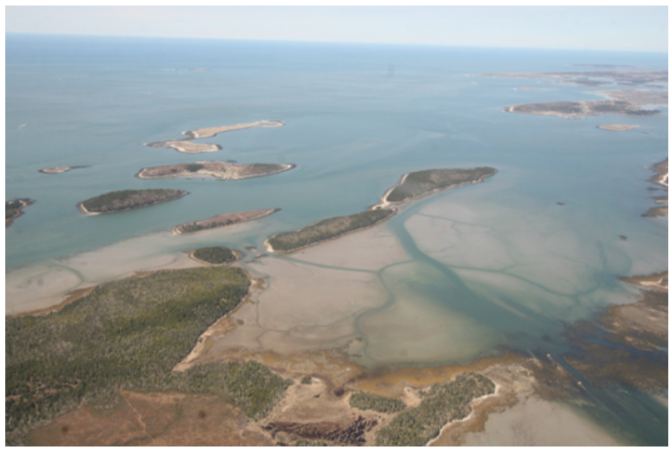
From the tip of the Tuskets to the briny Bras d’Or, Nova Scotia hosts a buffet of islands along the coast and in our many inland lakes. They provide visitors with a glimpse of wild beauty and an air of mystery; offering fantasies of self-isolation in a rustic cabin, or (in rarer cases) a self-sustaining luxury compound in the sea.
There is no denying the unique appeal of an island property: every trip is a journey and the setting is ripe for peaceful contemplation and an escape (geographically) from it all. But not all islands are created equal, and one person’s paradise is another’s bare rock suited more to the gloomy vibes of a horror film à la The Lighthouse (filmed, incidentally, in the almost-an-island Cape Forchu near Yarmouth, NS).
On occasion we are tasked with placing a monetary value on islands in Atlantic Canada, and though it feels crude to reduce these special places to dollar signs, our valuation crew is beholden to the oath of Market Values and Highest and Best Use. So, what factors into such an assignment? Before I jump into my canoe or take to the sky for the inspection, here are some considerations rolling around my head:
Location
The classic axiom of real estate applies most strikingly to island properties. An island located many kilometres out to sea will attract a much smaller pool of potential purchasers than an island within a leisurely boat ride of the mainland. For every additional hour spent travelling to an island, the cost of fuel, and risk of weather increases the difficulty in visitation and greatly increases the cost to move construction materials. For this reason, inland islands (on mainland lakes, or the Bras d’Or Lake) are generally more accessible and desirable than their oceanic counterparts.
Amenities
What better accessory for your yacht than a private island? Islands located near marina facilities, yacht clubs, and other services are immediately attractive to folks who enjoy Nova Scotia’s sailing culture. This trend is best revealed in the market for islands between Lunenburg and Chester on Nova Scotia’s South Shore. Here you will find the most expensive islands in the province, adorned with multi-million-dollar estates including the recently purchased “Kaulbach Island”. With a price tag of $4,000,000 this property includes multiple high-end buildings, deep anchorage, and a farm to keep you stockpiled in the event of any cataclysm (yacht not included).
Waterfrontage
Sandy beach or granite cliff? Both offer beauty but it is the former which is sought most by island purchasers. Valuing an island property often involves two key unitised elements: the “Basic Land Value” captures the uplands which tend to vary in quality based on vegetative cover, topography, etc. and are expressed as a value per acre; and the “Waterfront Benefit” which varies based on coastline material (sand, stone, boulders, etc.), accessibility, topography, and aesthetic appeal; and is expressed as a dollar amount per linear foot of water frontage. Breaking down value into both the Basic Land Value and the Waterfront Benefit is one of the ways we can leverage past sales of islands (which are inherently unique) to provide an estimate for islands yet to be sold.
Ecological Interest
As with many assignments involving wild places, the cold calculus of valuation has a redeeming quality when it can be leveraged to protect the land for future generations. In Nova Scotia, organisations such as the Nova Scotia Nature Trust, Nature Conservancy of Canada, Ducks Unlimited, and the Provincial government have created a market for islands which explicitly recognises their ecological significance. Islands which might otherwise be used to dry fishing gear can be justified with a Highest and Best Use “for conservation use” when there is demonstrable demand for islands hosting birds, mammals, and plant life unique to these coastal oases.
It’s a small step, but by establishing conservation as a legitimate Highest and Best Use (backed by market data) we are opening a door to recognising the intangible values and relationships we have with land. It is this humble appraiser’s hope that one day the valuation process will broaden even further, allowing for the legitimate weighing of non-market values and against the rigid confines of what is merely “financially feasible” or “legally permissible”. Perhaps we can one day pit the spiritual value of land against its extractive value.

James Stephens is a consultant in our Valuation Division and is heavily involved in the valuation of lands for the provincial governments, private land owners, and land trusts including the Nova Scotia Nature Trust, Nature Conservancy of Canada, Annapolis Valley Farmland Trust, and the Island Nature Trust. For more information about our range of Valuation® services, valuations for land donations, feel free to contact James at (902) 429-1811 or .
